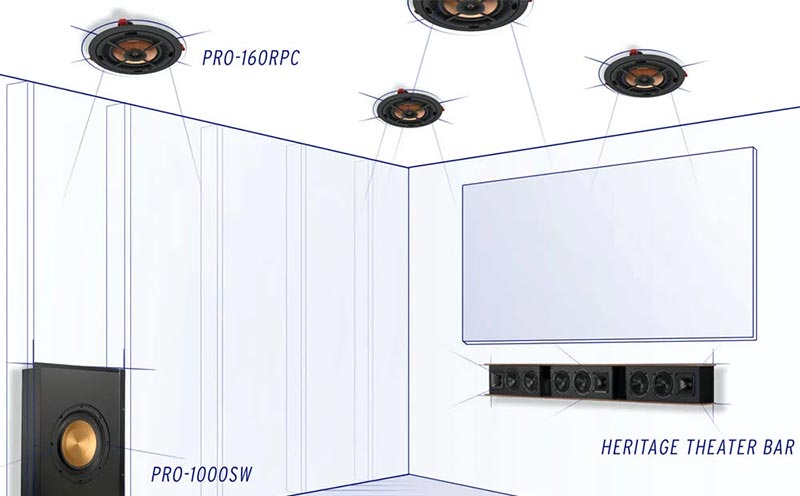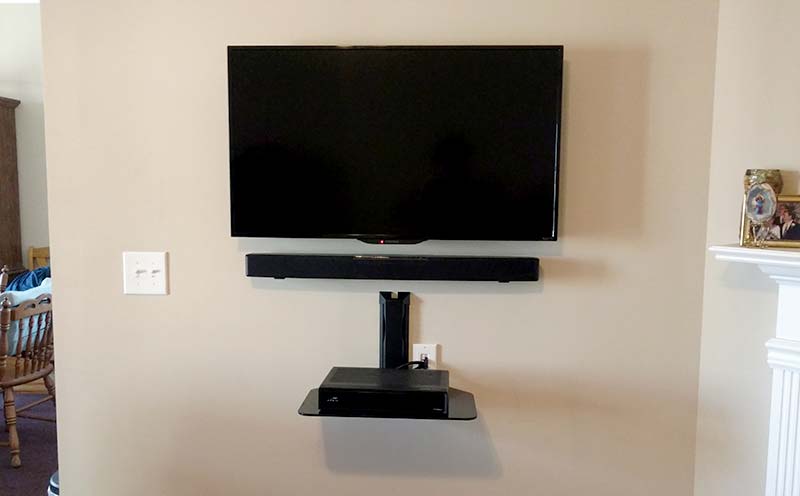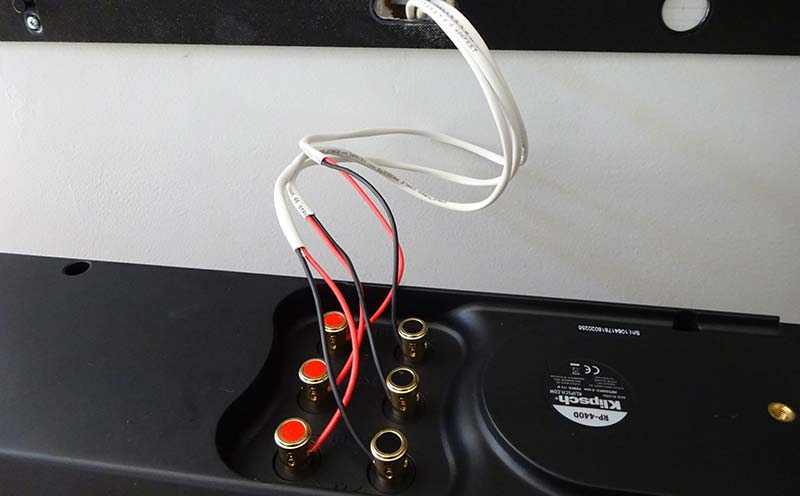
Differences between a Passive and Active Soundbar
The main difference between a passive and active soundbar lies in how they are powered and connected to audio sources.
Passive Soundbar
A passive soundbar does not have built-in amplification or processing capabilities. It requires an external amplifier or AV receiver to power the speakers and process the audio signals. The audio signals from the source, such as a TV or Blu-ray player, are sent to the amplifier or receiver, and then the amplified signals are sent to the passive soundbar. The soundbar itself consists of multiple speaker drivers that work together to produce the audio output.
Think of a passive soundbar as bar of speakers or the front stage of a home theater. In most scenarios a passive soundbar consist of 3 speakers, the front left, center and right speakers. Picture at the top of this page is a Klipsch passive soundbar.
Advantages of Passive Soundbars
Flexibility: Since the soundbar relies on an external amplifier or receiver, you have the freedom to choose and upgrade the amplifier separately, giving you more control over the sound quality and system customization.
Customization: Using a passive soundbar allows you to custom integrate in-ceiling and in-wall speakers to the system for better sound and a cleaner look. Picture diagram below shows a Dolby Atmos home theater system utilizing a passive soundbar for the front stage. All powered from a receiver stashed away in a AV closet somewhere in the house.

Compatibility: Passive soundbars can work with a wide range of audio systems and setups as long as you have a compatible amplifier or receiver.
Disadvantage of Passive Soundbars
Cost: Usually passive soundbars are going to be on the more expensive side because you’re purchasing the bar of speakers and a separate receiver.
Passive soundbar examples:
*Links above will take you to the manufactures website for more information.
Active Soundbar
An active soundbar, also known as a powered or self-amplified soundbar, has built-in amplification and processing capabilities. It does not require a separate amplifier or receiver to function. The audio signals from the source can be directly connected to the soundbar, which internally amplifies the signals and drives the built-in speakers.

Advantages of Active Soundbars
Simplicity: Active soundbars are generally easier to set up and use since they eliminate the need for an external amplifier or receiver. They often come with built-in connectivity options, making it convenient to connect audio sources directly.
All-in-one solution: With built-in amplification and processing, active soundbars are designed to work seamlessly together, ensuring that the amplification matches the speaker drivers and producing optimized sound quality.
Cost: Active soundbars are going to be the best bang for the buck usually averaging in around $300 with a subwoofer.
Examples of active soundbars:
- Sonos Arc
- All Samsung soundbars are active
Disadvantages of Active Soundbars
Active soundbars are designed to be easy to use and budget friendly. Plug it in and it works. Whereas passive soundbars give you more power, sound and allow more customization.
Visual Differences Between the Two Types of Soundbars
Connections on back
Quickest ways to identify the type of soundbar is to flip the soundbar so that you’re looking at the back . A passive soundbar (pictured below) will have speaker terminals to connect it to a receiver or amplifier and no power cord.

An active soundbar (pictured below) will not have speaker terminals but will have HDMI, optical and a power cord.

Without using Google to plug in the model numbers, this is one of the best ways to identify passive soundbars vs active.
Other Ways To Identify which Type
Let’s just say you can’t get to the back of the soundbar. If the soundbar has a remote, digital screen on front or LED lights visible, it’s more than likely an active soundbar.
Passive soundbars are always wired to the amp or receivers speaker terminals. So if you have a receiver and soundbar, your speaker bar is passive. Active soundbars have the amp/receiver is built-in. Thus why they call it an active soundbar.
Summing it Up
It’s important to note that both passive and active soundbars can vary in terms of audio quality, features, and pricing. Ultimately, the choice between a passive soundbar and an active soundbar depends on your specific requirements, budget, preferences, and the existing audio setup you have or plan to build.
If you need help selecting a soundbar, get in touch with us and we can help you decide what’s best for you.
